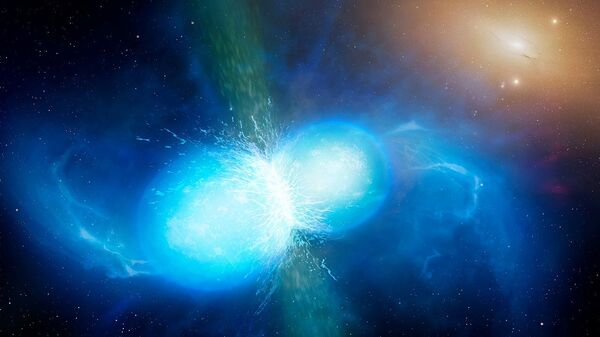Scientists from Columbia University and the University of Florida have determined that the formation of the solar system as we know it was preceded by a massive merger of two neutron stars, which are second in their density only to black holes and sometimes referred to as "white holes". The cataclysm happened near the nebula where our sun was formed, they added.
READ MORE: Unknown Hotspots Detected Swirling Round Milky Way's Supermassive BLACK HOLE
Physicists Szabolcs Marka and Imre Bartos wrote in their research, which was published in Nature, that the merger was followed by a so-called "r-process" that led to the creation of r-isotopes of actinides, such as plutonium-244 and curium, which were found in abundance in the early solar system. According to the models built by the scientists, this abundance was caused by a cataclysm taking place in the relative proximity of the pre-solar nebula — 300 parsecs (978 light years) away.
READ MORE: WATCH Astronomers Reveal First Ever PHOTO of Black Hole
Mergers of two neutron stars occur quite rarely, with between one and 100 such events taking place in a million years, according to the scientists. Neutron star collisions emit large amounts of elements capable of capturing rapid neutrons that lead to the creation of heavy r-isotopes with half-lives of around 100 million years. The results of their divisions can be found in meteorites traveling through our solar system and giving scholars the clues to the initial amount of r-isotopes created by the merger.




